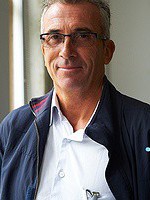resumo
The increasing demand for building materials exerts tremendous pressure on the Earth's natural resources, as many raw materials are reaching critical and distressing levels. As a result new materials that can, totally or partially, substitute conventional raw materials have been the focus of intense research and are eagerly pursued. Waste materials emerge as ideal candidates for partial substitution of ceramic raw materials, due to their large scale production. Despite their high annual production rate wood wastes have seldom be used in building materials, so their valorisation in the construction sector would be highly advantageous from an environmental and economic point of view. This work reports the incorporation of wood wastes (sawdust) as a pore forming agent into ceramic tiles for the production of lightweight bi-layered ceramic tiles with tailored thermal conductivity. To the best of our knowledge this is the first investigation concerning the incorporation of wood wastes in this type of material. Optical micrographs of the sintered discs did not reveal the presence of a black core, indicating that sawdust was totally burn out even when industrial fast-firing cycles were applied. Moreover its decomposition does not induce defects in the ceramic bodies. The results demonstrate that sawdust incorporation promotes a threefold decrease in the thermal conductivity of the ceramic tile, and reduces product weight (up to 7.5%), while maintaining suitable mechanical resistance in comparison to commercial stoneware tiles. Sawdust can be successfully incorporated into stoneware ceramic tiles ensuring environmental, technical and economic advantages: waste valorisation by sawdust reuse (environmental advantage); density reduction of the product which decreases the tiles transportation and distribution costs (economic advantage); restrain energy loss (technical advantage). The new and exciting features provided by sawdust incorporation may widen the range of applications of this common product while simultaneously contributing towards sustainable construction. (C) 2014 Elsevier Ltd. All rights reserved.
palavras-chave
PORE-FORMING AGENTS; CERAMICS; SAWDUST; RESIDUES; POROSITY; BRICK
categoria
Science & Technology - Other Topics; Engineering; Environmental Sciences & Ecology
autores
Novais, RM; Seabra, MP; Labrincha, JA
nossos autores
agradecimentos
The authors acknowledge the financial support from Portuguese Innovation Agency (Adi) through project ThermoCer, to CICECO (PEst C/CTM/LA0011/2013) and RNME - Pole University of Aveiro (FCT Project REDE/1509/RME/2005) for instrument use, scientific and technical assistance. The authors acknowledge CINCA for providing the spray-dried powder, and the assistance of Dr. R.C. Pullar with editing English language in this paper.




